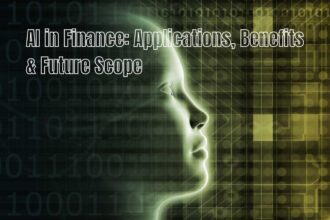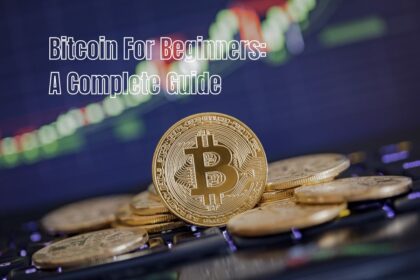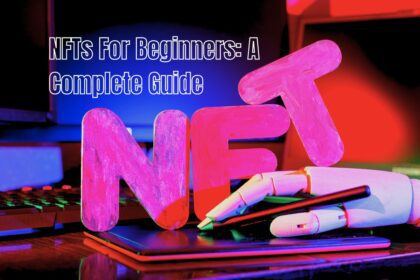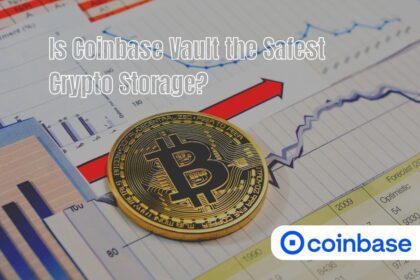Introduction
Welcome to the complete guide on Ethereum for beginners! Whether you’re new to the world of cryptocurrencies or have some experience, this guide will provide you with a comprehensive understanding of Ethereum, its underlying technology, and how to get started with it. So, if you’re ready to dive into the exciting world of Ethereum, let’s get started!
What is Ethereum?
Ethereum is a decentralized, open-source blockchain platform that enables developers to build and deploy smart contracts and decentralized applications (dApps). It was proposed by Vitalik Buterin in late 2013 and launched in July 2015. Ethereum introduced the concept of programmable blockchain, allowing developers to create their own applications and execute decentralized agreements without the need for intermediaries.
How Does Ethereum Work?
Ethereum’s Blockchain Technology
At its core, Ethereum relies on blockchain technology, a distributed ledger that records and validates transactions across a network of computers. Ethereum’s blockchain is built upon a consensus mechanism called Proof of Work (PoW), similar to that of Bitcoin. However, Ethereum has plans to transition to a more energy-efficient consensus mechanism called Proof of Stake (PoS) with the upcoming Ethereum 2.0 upgrade.
Smart Contracts and Decentralized Applications
One of Ethereum’s most significant innovations is the introduction of smart contracts. Smart contracts are self-executing contracts with predefined rules and conditions encoded within them. These contracts automatically execute once the conditions specified within them are met. This feature enables developers to create applications that run exactly as programmed, without any possibility of downtime, censorship, fraud, or third-party interference.
Decentralized applications, or dApps, are applications that run on the Ethereum blockchain. These applications leverage the decentralized nature of Ethereum to offer enhanced security, transparency, and immutability. Examples of dApps include decentralized finance (DeFi) platforms, non-fungible token (NFT) marketplaces, and decentralized exchanges (DEXs).
Getting Started with Ethereum
Setting Up a Wallet
Before you can start using Ethereum, you’ll need to set up a wallet to store your Ether (ETH), the native cryptocurrency of the Ethereum network. There are various types of wallets available, including software wallets, hardware wallets, and web-based wallets. Each type has its own advantages and considerations, so choose one that suits your needs and security preferences.
Some popular Ethereum wallets include:
- MetaMask: A widely used web browser extension wallet that offers a user-friendly interface and secure storage for Ether and ERC-20 tokens.
- Ledger Nano S: A hardware wallet that provides offline storage and additional security measures for your Ethereum assets.
- MyEtherWallet: An open-source, client-side wallet that allows you to interact directly with the Ethereum blockchain and manage your funds.
Buying Ethereum
Once you have a wallet set up, you’ll need to acquire some Ethereum. There are several ways to buy Ethereum, depending on your location and preferred payment methods. Here are a few popular options:
- Cryptocurrency Exchanges: Platforms like Coinbase, Binance, and Kraken allow you to buy Ethereum using fiat currencies or other cryptocurrencies. These Crypto exchanges provide a user-friendly interface and often offer additional features like trading and staking.
- Peer-to-Peer (P2P) Trading: P2P trading platforms like LocalBitcoins and Paxful enable you to buy Ethereum directly from other individuals, often at competitive rates.
- Decentralized Exchanges (DEXs): DEXs like Uniswap and Sushiswap allow you to trade Ethereum and other tokens directly from your wallet, without the need for an intermediary.
Exploring the Ethereum Ecosystem
Now that you have some Ethereum, it’s time to explore the vast Ethereum ecosystem. Here are some key areas to dive into:
- Decentralized Finance (DeFi): DeFi has emerged as one of the most popular use cases for Ethereum. DeFi platforms offer a range of financial services, such as lending, borrowing, yield farming, and decentralized exchanges. You can participate in DeFi by interacting with protocols like Aave, Compound, and MakerDAO.
- Non-Fungible Tokens (NFTs): NFTs have gained significant attention recently, thanks to their ability to represent unique digital assets like artwork, collectibles, and virtual real estate. Ethereum is the primary blockchain for NFTs, and platforms like OpenSea and Rarible allow you to buy, sell, and trade these digital assets.
- Ethereum Improvement Proposals (EIPs): Ethereum’s development is driven by community consensus, and proposed changes to the network are submitted as Ethereum Improvement Proposals. Stay updated with the latest EIPs to understand the future direction of Ethereum and potential upgrades.
Frequently Asked Questions (FAQs)
What is the difference between Ethereum and Bitcoin?
Ethereum and Bitcoin are both cryptocurrencies but serve different purposes. While Bitcoin primarily functions as a digital currency and store of value, Ethereum focuses on enabling the creation of decentralized applications and smart contracts. Ethereum’s blockchain is also more programmable and supports a wider range of use cases compared to Bitcoin.
How is Ethereum different from other blockchain platforms?
Ethereum differentiates itself from other blockchain platforms through its robust smart contract functionality and expansive ecosystem. It offers a wide range of development tools, libraries, and standards that make it easier for developers to build decentralized applications. Ethereum’s large and active community also contributes to its ongoing development and innovation.
What are ERC-20 tokens?
ERC-20 tokens are a type of digital asset that follows a set of standardized rules on the Ethereum blockchain. These tokens are fungible, meaning they can be exchanged on a one-to-one basis. Many tokens issued through Initial Coin Offerings (ICOs) or token sales are ERC-20 tokens. Examples of ERC-20 tokens include USDT (Tether), LINK (Chainlink), and UNI (Uniswap).
Is Ethereum secure?
Ethereum’s blockchain has a strong track record of security, but it’s essential to follow best practices to protect your assets. Make sure to choose a reputable wallet provider, enable two-factor authentication (2FA) where possible, and be cautious of phishing attempts or suspicious links. Regularly updating your wallet software and staying informed about potential security vulnerabilities is also crucial.
What is Ethereum 2.0?
Ethereum 2.0, also known as ETH2 or Serenity, is a major upgrade to the Ethereum network. It aims to address scalability, security, and energy efficiency issues by transitioning from the current Proof of Work (PoW) consensus mechanism to Proof of Stake (PoS). Ethereum 2.0 will be implemented in multiple phases, starting with the Beacon Chain, which has already been launched.
Can I mine Ethereum?
Yes, Ethereum can be mined using a computer with sufficient computational power. However, with the upcoming transition to Ethereum 2.0 and the shift to Proof of Stake, mining Ethereum will no longer be possible. Instead, participants will be able to stake their Ethereum and earn rewards by securing the network.
Conclusion
Congratulations! You’ve reached the end of our Ethereum for beginners guide. We’ve covered the fundamentals of Ethereum, including its blockchain technology, smart contracts, decentralized applications, and how to get started with Ethereum. Remember, the world of Ethereum is constantly evolving, so stay curious, keep learning, and explore the exciting opportunities that this innovative platform has to offer.













